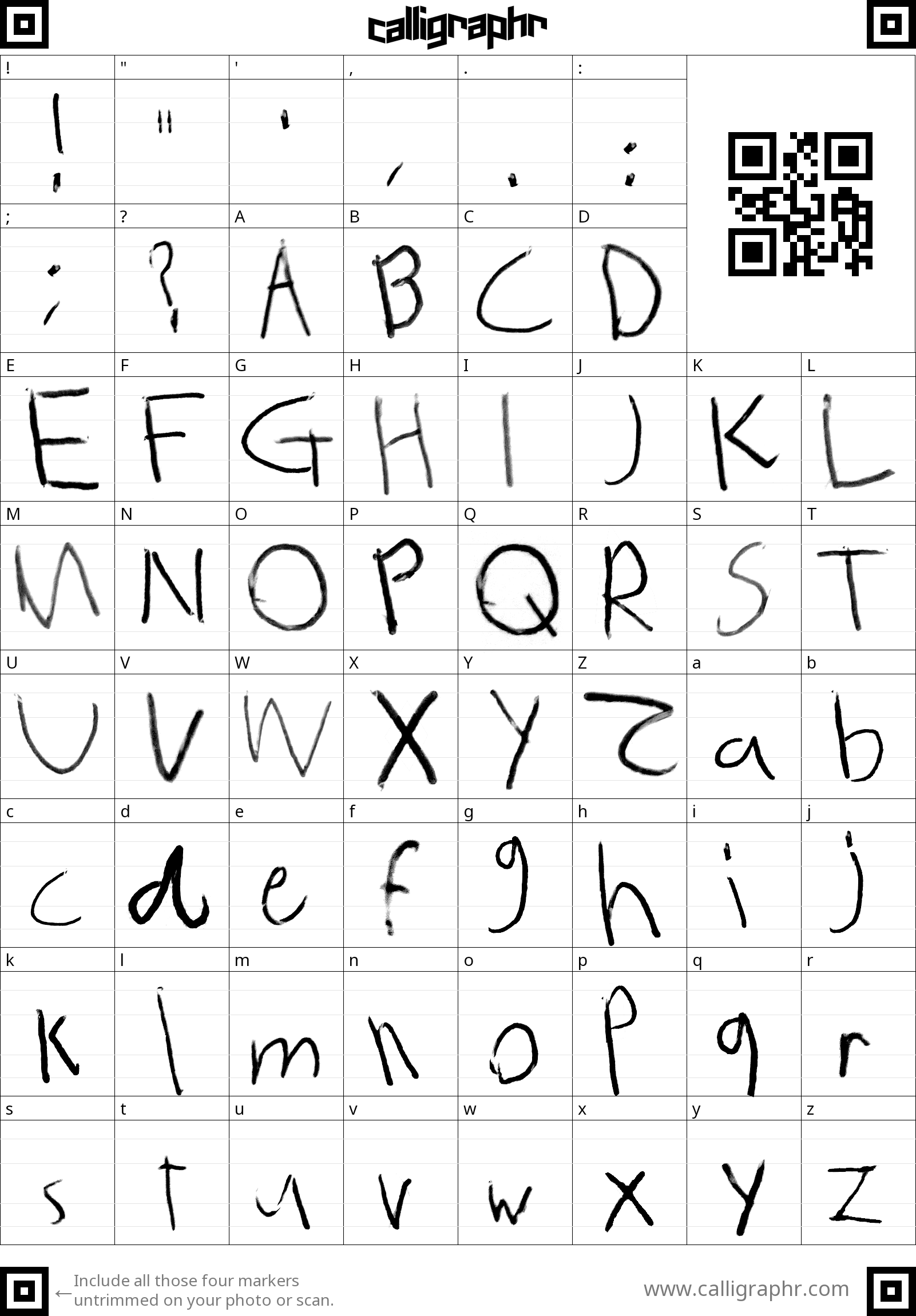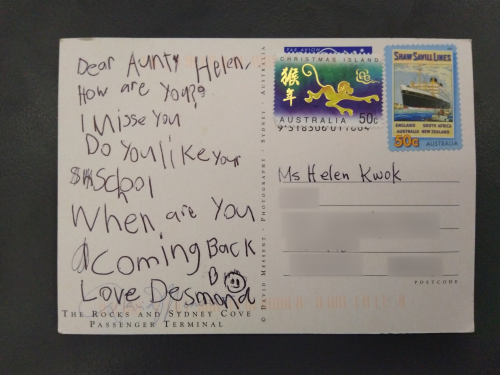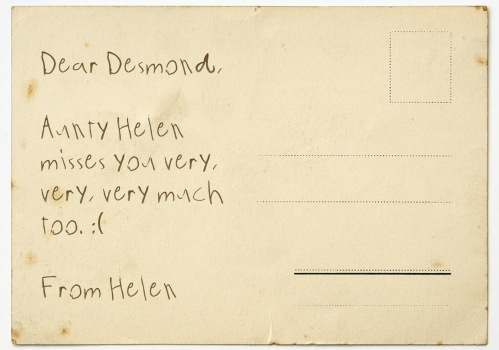
Theme: Found Object
As part of this week's theme, we all had to bring in an object which is meaningful to each of us. I brought in a postcard I received a few days ago from my nephew, Desmond, in Perth.
Context:
I was interested in the handwritten quality of the object, and how personal it feels to receive something that was handwritten by my nephew (he's six) compared a typed message. It reminded me of the Griffin & Sabine books by Nick Bantock, and the children's book series The Jolly Postman by Janet and Allan Ahlberg. In these books, you can physically take out letters and postcards and read them.
In the Griffin & Sabine books, they especially use handwriting as a device to show characterisation. Griffin, a postcard illustrator, starts off typing his responses to Sabine’s postcards as his character is a logical person. Sabine, on the other hand, is an artist who possess a fluid and assured sense of self, writes her letters and postcards in her own handwriting.
Method: I wanted to see if I could replicate Desmond's handwriting to make a font. After doing some research on how to do this, I went with a free tool called Calligraphr.
Response:
I created the Desmond font using Calligraphr. The process involved copying and pasting each letter from Desmond's handwriting into a template. For letters that were missing, I made them up using parts of the characters he's written, and merged them together in Photoshop. After completing the template, the Calligraphr website generated a .ttf and .otf font.
Font File (.ttf) | Font File (.otf)
An example of my response to Desmond's postcard using the Desmond font is attached.
The result was surprisingly good and easy to do. It's missing that scratchiness (where the ballpoint pen doesn't ink the paper properly), as the font is turned into vectors and filled as solid. But I was surprised as how simple the process was to make my own custom fonts.
About This Work
By Helen Kwok
Email Helen Kwok
Published On: 20/03/2019



